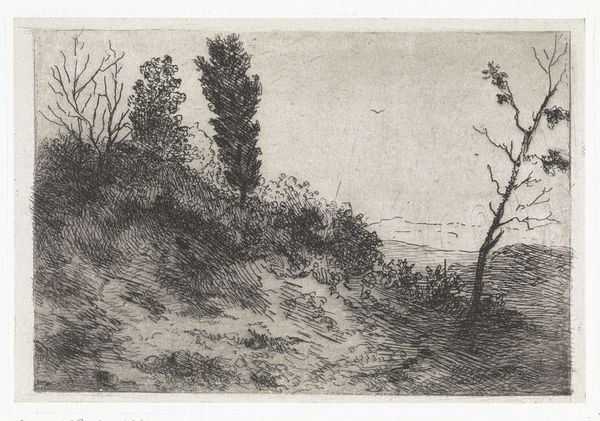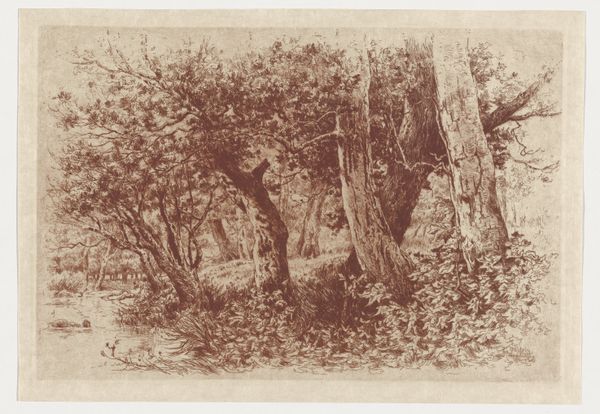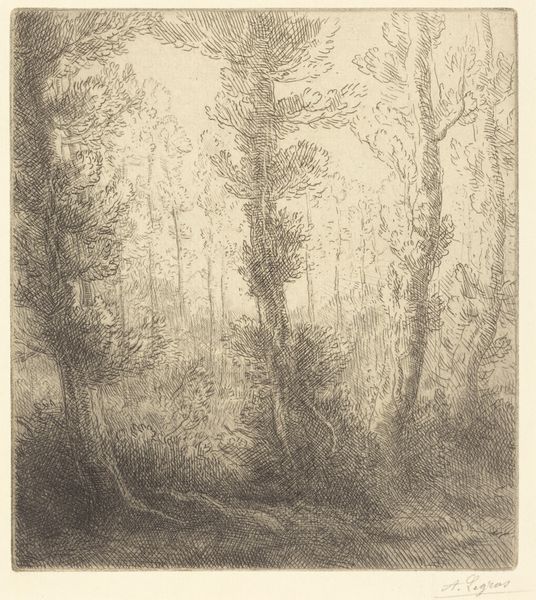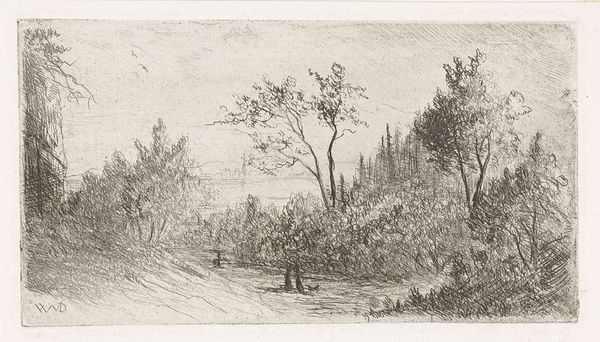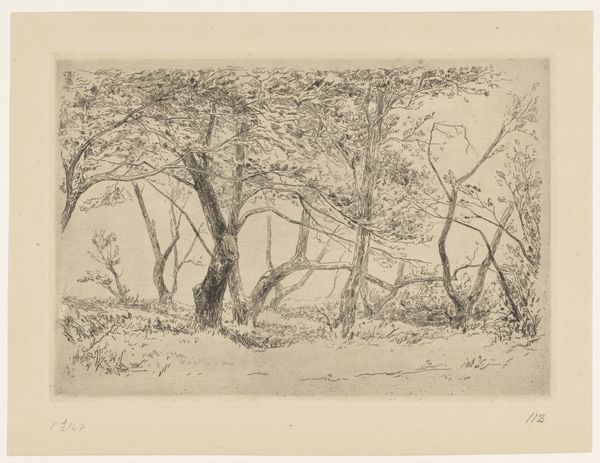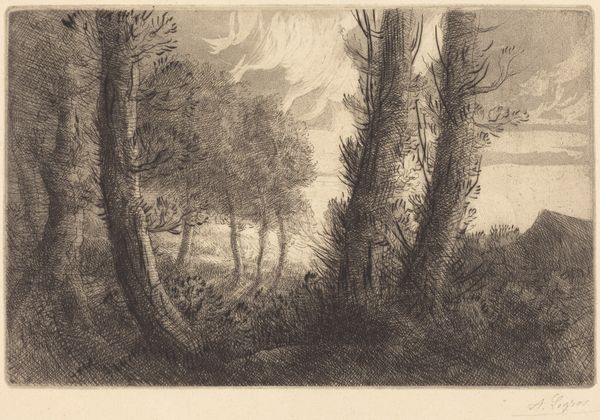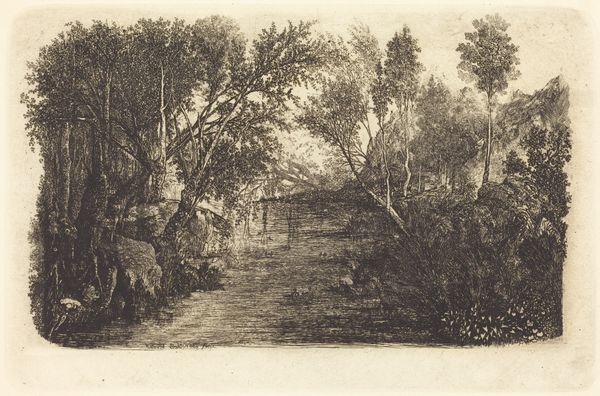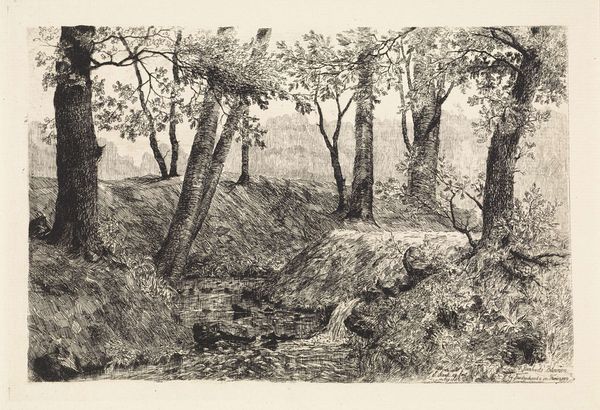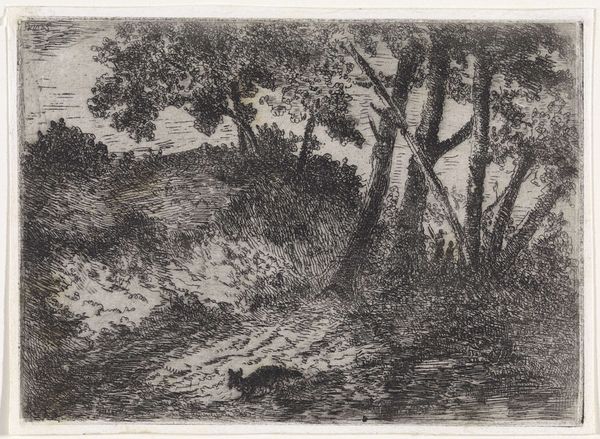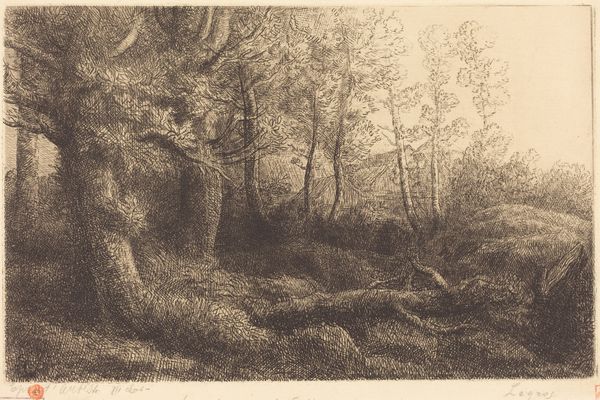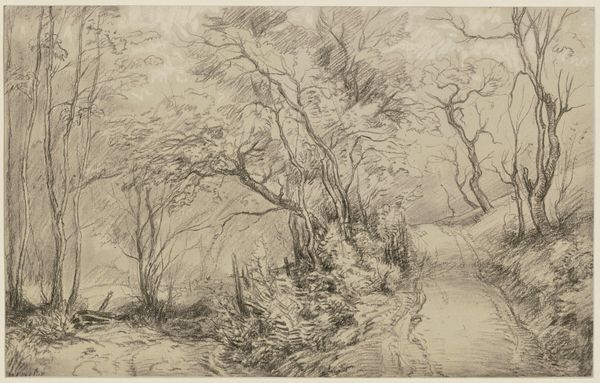
Dimensions: height 99 mm, width 122 mm
Copyright: Rijks Museum: Open Domain
Willem van Dielen created this etching, titled "Boslandschap", in 1860. This work reflects the cultural importance of landscape in the Netherlands during the 19th century, connecting to a broader European movement that romanticized nature. We can examine how the artist uses the etching technique to create a sense of depth and atmosphere, using thin, layered lines. At the time, the Hague School was developing a uniquely Dutch form of landscape painting, turning away from both the idealized landscapes of earlier periods and the radical social realism of artists like Courbet. Van Dielen's landscape reflects a conservative appreciation of the Dutch countryside. To understand this piece better, it’s helpful to look at the history of landscape art in the Netherlands, as well as the development of etching as a popular medium. Considering the institutional context of art academies and salons in the 19th century also helps us to understand the social role that landscapes played in Dutch culture. The meaning of art is always dependent on the social and institutional context in which it was made.
Comments
No comments
Be the first to comment and join the conversation on the ultimate creative platform.
